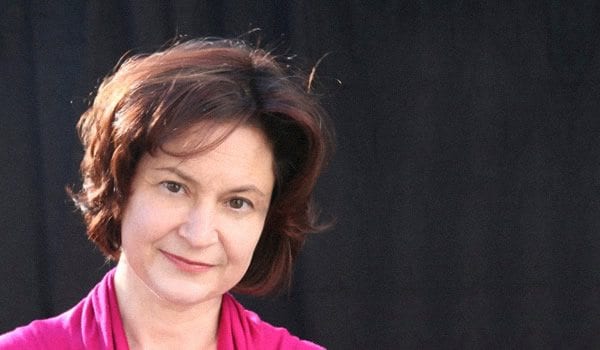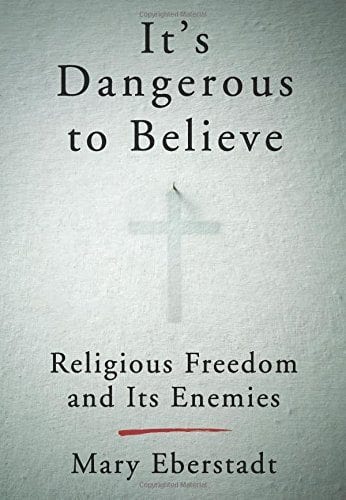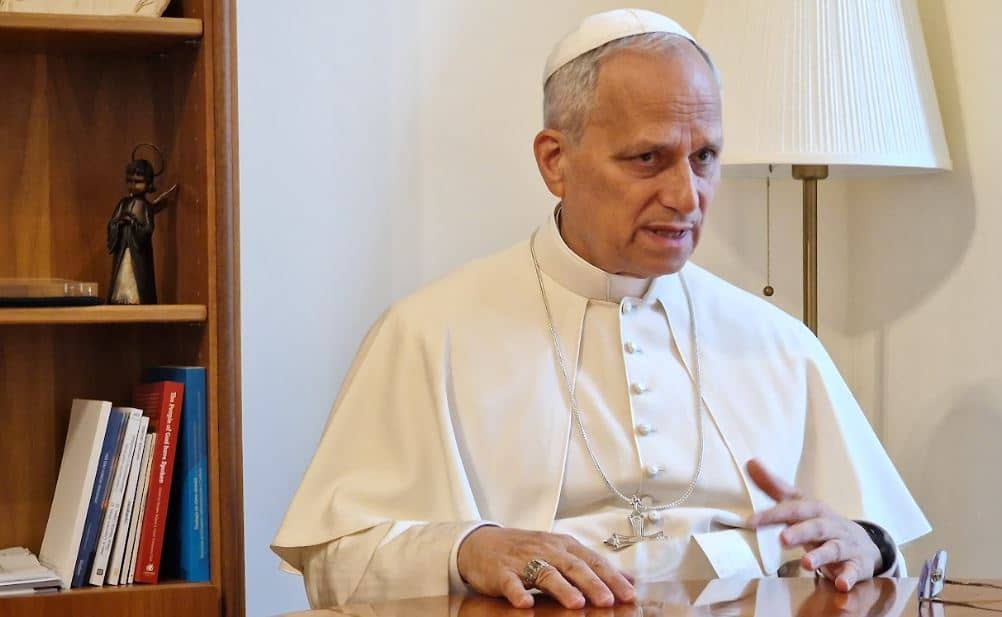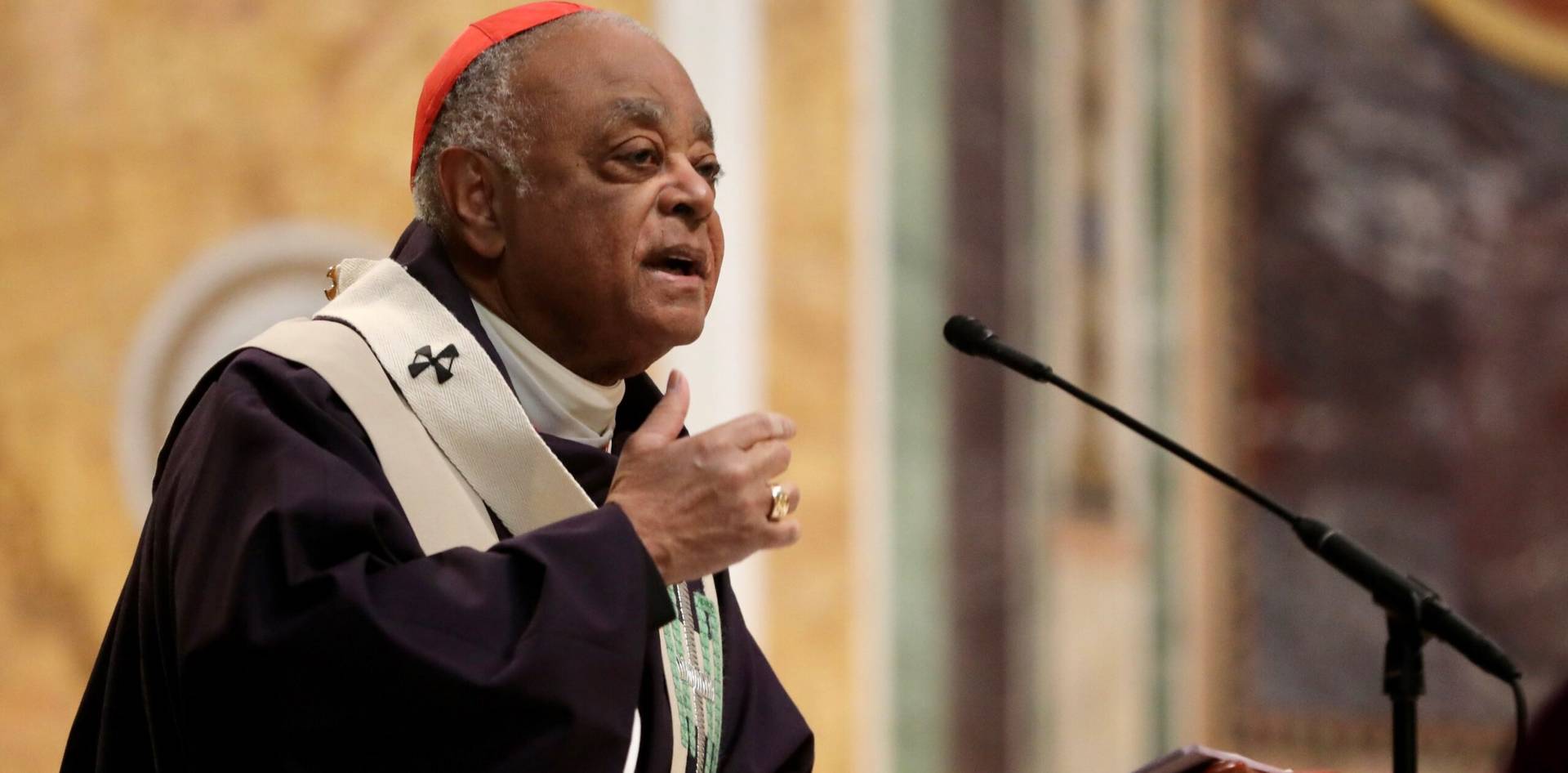Last month, the Supreme Court issued a unanimous ruling that the U.S. government cannot fine the Little Sisters of the Poor for refusing to comply with the now-infamous HHS mandate. The court also ordered lower courts to work with the government to provide an alternative means of providing the services included in the mandate, but in a way that did not involve the participation of the Little Sisters.
It was a rare example of compromise—but that’s all the Little Sisters were seeking in this case so that they could go about their work of caring for the elderly and dying without government interference.
This outcome—where religious believers are given the space to openly practice and live out their faith—is precisely what cultural critic Mary Eberstadt pleads for in her new book, It’s Dangerous to Believe: Religious Freedom and Its Enemies, just released on June 21st.
Through a series of court decisions and public intimidation, traditional believers are feeling increasingly squeezed out of the public square. Eberstadt, however, argues that if we truly want to have an open society, it means that those seeking “tolerance” and “diversity” must practice what they preach by making room for people of faith.
I recently sat down with her to explore this further.
White: Let’s start with the obvious. Who are the enemies of religious freedom?
Eberstadt: At the end of World War II, philosopher Karl Popper published The Open Society and Its Enemies, the definitive attack on historicism. It argued that the historicist vision incubated by Plato and developed in full by Hegel and Marx–the idea that human beings are the marionettes of immutable historical forces beyond their control–is inimical to the very idea of freedom.
Historicism is the enemy of liberty.
I borrowed that phrase of Popper’s because his point is critical to our own day, and specifically to the question of religious liberty. Today, a related but different historicist fallacy is afoot: the idea that capital-H History has somehow trumped religion and rendered Christianity, in particular, obsolete.
This is a shibboleth of our time. It’s reflected in common sayings, such as that religious people stand on the “wrong side of history,” that society can’t “turn back the clock,” that “the genie can’t be put back in the bottle,” and so on. All of these are retail expressions of historicism. They’re used as ideological weapons to shut down free debate.
To say that religious believers (or others) have been overruled by “history” is to imply that their opinions no longer have merit.
We need to be aware of the threat that today’s historicism poses to freedom itself, just as Popper was aware. Anyone who puts “religious liberty” in quotation marks, as many people now do – anyone who acts as if religious freedom is somehow a suspect phrase, or a stalking horse for something else – is on the wrong side of the open society.

Can you recount the origins of our current predicament?
Some would say that attacks on Christians and Christianity are as old as the faith itself, and there’s truth to that. The first 33 popes were all martyrs, as were many of the most prominent early Christians, and the centuries since then haven’t lacked for bigotry and worse aimed at followers of the Cross.
To offer a more benign example, the kind of ridicule we see aimed at Christianity today, especially in popular entertainment, is also nothing new. There’s a pretty straight line from Voltaire’s Candide, say, to The Book of Mormon and other modern fare that exploits religious faith for laughs.
Even so, the vituperation aimed at believers today is worse than what’s come before, at least in the United States. It’s rooted not only in standard, longstanding complaints about the Christian moral code, but in some other recent developments.
First, in the wake of 9-11, the new atheism exploded across popular culture – fueled in part by the spurious idea that 9-11 somehow “proved” that all religious believers amounted to a newly suspect class. Illogical though that claim may have been, it nevertheless has percolated down, and it’s put religious believers on the defensive against secularists.
Second, and in tandem with the unleashing of the new atheism, the Catholic priest scandals dealt the Church a moral blow from which it has yet to recover – even after strenuous reform, and even with a populist Pope Francis at the helm.
And finally, the anonymity of the internet and the immediacy of social media help anger to circulate more effectively than before. This isn’t only a problem for the faithful, but social media does make intimidation and shunning more immediate and instantaneous than it used to be, and religious belief has become a particular target thanks to the unpopularity of some Christian teachings.
Some might claim that the genocide against Christians in the Middle East and elsewhere is where we should be focusing our attention—not on battles over contraception and gay marriage. How would you respond?
It isn’t standing for principle that has put Christians on the defensive across Western countries. If anything, the opposite is true.
In March 2016, Secretary of State John Kerry announced what people around the globe had been asking the United States to recognize for years: that ISIS was indeed committing genocide against Christians in Iraq and Syria. The mystery is: why did this declaration take so long?
After all, reporting on the tragedy of Christians in the Middle East has been abundant. John L. Allen, Jr.’s The Global War on Christians; Persecuted by Paul Marshall, Lela Gilbert, and Nina Shea; the reporting by Kathryn Jean Lopez and others dedicated to keeping this catastrophe in the news: for years, authoritative voices have joined to document the truth about the slaughter of Christians in the Middle East.
Yet also for years, a progressive president and administration insisted that the United States must not go out of its way to help these very people because they were Christians, asserting that such would amount to a “religious test.” That’s exactly like saying that rescuing Jews in Nazi Europe should have been off-limits for the United States, because Judaism is a religion; or that saving dissident Jews in the Soviet Union should have been ruled out for the same reason. It’s a specious argument.
The sidelining and denigrating of Western Christians makes it hard to help Christians elsewhere. Pope Francis himself has spoken of the “polite persecution” of the faithful in advanced countries. Archbishop William Lori of Baltimore has noted “bloodless persecution” of believers in the United States and “the severest threats to religious liberty” that Americans have yet faced.
To acknowledge they’re right isn’t to say that that the hard persecution of Middle Eastern Christians, and the soft persecution of Western Christians are one and the same. But the two developments remain fatefully intertwined. The increasing defensiveness of Western Christians, and their continuing stigmatization in society’s higher reaches, especially, has reduced the likelihood that Christians in the advanced West can gain a hearing — for themselves or anyone else.
You describe our current state of affairs as a secularist witch-hunt. What do you mean by this?
One good definition of “witch-hunt” cited in the book comes from a sociologist of the Salem trials: “the pursuit of a group of persons for their supposed characteristics or beliefs, rather than for anything they have done.”
What’s happening today to small-o orthodox Christians in the United States and elsewhere fits that definition eerily well. Unapologetic believers today are commonly called “bigots” and “haters” and assigned other degrading epithets, for example, just in virtue of being religious believers — and with no evidence for the charge that they hate anyone at all.
The fact that they’re not subject to ordinary standards of proof is reminiscent of panics of the past, during which irrationality got the better of reason, and people were convicted unfairly of bogus charges.
Vigorous debate and genuine airing of differences are critical to the open society. But the kind of intimidation seen in the public square today — much of it aimed against Christians who won’t recant their beliefs — is something else. There’s a level of unreason and irrationality among and within the secularist-progressive alliance that didn’t exist before.
In the book, I call this phenomenon an anti-religious panic. When inquisitors are in charge, that’s a problem for everybody – not just for believers, but for all fair-minded people who respect freedom and diversity.

You mention that the Supreme Court’s decision to legalize gay marriage effectively ended the culture wars. How so?
The “culture-war” metaphor is problematic for more reasons than one, and I usually avoid it. That said, it’s clear that a new chapter has begun in the long-running division over the so-called “social issues.”
Today — as opposed to, say, forty years ago – many of those issues are no longer contested in the advanced nations of the West. In the United States particularly, driven in part by an interrelated series of judicial decisions, the progressive, secularist side has chalked up victory after victory for several decades now: from school prayer to contraception and abortion, to obscenity cases, same-sex marriage, and other, related issues too.
And exactly because we’ve entered a new era in which secularist ascendency is plain, it’s now fair to open a conversation about a question that hasn’t been asked yet, and should be: why, when their movement has been victorious in so many areas, does the secularist-progressive alliance still insist on treating faithful Christians as if they are a unique threat to everyone else? What’s behind the rising vindictiveness aimed at people of the Book these days, when their side isn’t even the winning one?
If anyone can be said to suffer the “irrational animus” of their fellow citizens right now, it isn’t the progressive victors in the social arena. It’s instead the people they stigmatize without mercy: the believers.
White: How are the poor and marginalized members of society the first victims of this new intolerance that you describe?
One of the worst consequences of the secularist drive to reduce Christianity’s influence in the world is that it undermines the churches’ efforts to help the poor and destitute. Anti-Christian activism drains energy and finite resources out of charities, and into prolonged legal battles and other skirmishes that suck resources away from good works.
The syllogism is obvious: one can’t undercut or close religious charities, as anti-Church activists seek to do on numerous fronts, without hurting the people whom the churches are trying to help. This is true whether what’s on the chopping block are adoption agencies, or hospitals, or refugee resettlement – all of which have become legal and public-relations targets.
That’s a lot of collateral damage to ask America and Americans in need to accept. Protestants as well as Catholics testify that progressive efforts to score ideological points clash with their efforts to help the poor.
John Ashmen, for example, president of the Protestant evangelical Association of Gospel Rescue Missions, has observed that all Christians are asking for is “freedom to care for the poor.” That’s a compelling point, and it needs more attention than it’s yet received.
You’ve chronicled a pretty grim situation. Is there any reason for hope?
There’s always reason for hope! Unless one’s a historicist. The situation is only hopeless if people believe that they’re doomed to be victims of merciless, impersonal machinations. Christians defy that false anthropology.
Contrary to the idea dominant since the Enlightenment, religion isn’t the historical outlier; secularism is. Also as a matter of record, revival and conversion are often right around the corner.
Consider just the waves of Great Awakening between the early eighteenth and late nineteenth centuries in the United States; or the post–World War II boom in religiosity that enveloped most nations in the Western world from the war’s end into the early 1960s. No one saw those coming, either.
One might even suspect that today’s secularist fury toward the faithful is driven precisely by the knowledge that religious resurgence is always possible, and that many of Christianity’s greatest converts, from St. Paul forward, came from the ranks of religion’s despisers themselves.
There’s also hope to be found in the fact that what’s radical these days isn’t rejecting the Christian code, but living by it. People who lean in toward religious tradition today know that they can’t take society’s approval for granted; they’re having to learn their faith, and defend it with more heart, than Americans of generations past; and they’re building up a vibrant, vigorous new counter-culture as a result.
The new intolerance is a crucible in which the spiritual leaders of tomorrow are being forged. As real as the travails of today’s believers is the mostly unseen, but nonetheless profoundly felt renewal movement that’s already underway in response.
That spells something with a capital H — and it isn’t “history.” It’s hope.

















